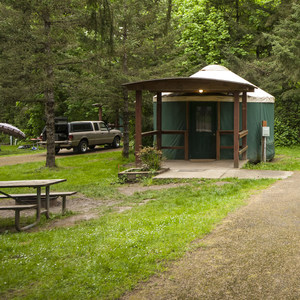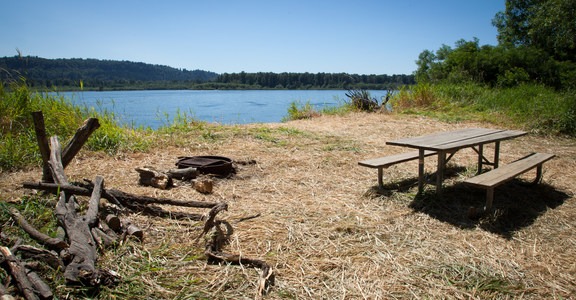The 366-acre Vancouver National Historic Reserve is a vast assemblage of historic structures that includes Fort Vancouver National Historic Site, several historic residences and barracks, an air museum, parkland, private businesses and residences, and The Grant House restaurant. Located just a short drive from Portland, the reserve is a rich and rewarding resource for anyone interested in the development of this region. From the contentious relationship between British and American interests in the mid-19th century to the increasingly American identity that emerged as the Oregon Country was settled to the establishment of a full Army outpost, the site is a portal into a fascinating transitional period in the West. If you have the curiosity and the stamina, this reserve can easily sustain hours of exploration. Fortunately, at less than a half-hour's drive from Portland, it is easy to break the time up into multiple visits.
The entire area is managed by the National Parks Service, which is remarkable given the number of buildings and the size of the grounds. Officer's Row alone consists of 22 houses, including the Grant House, built in 1846, the O.O. Howard House, built in 1879, and the Marshall House, built in 1886. All of these structures were built to accommodate the officers stationed at Vancouver Barracks, established by the U.S. Army in 1849 in the newly minted Oregon Territory. The Army used Vancouver Barracks extensively during the Civil War and the Indian War mostly for supplies and logistical support to the region. In the first part of the 20th century the site was used for World War I efforts as well as a headquarters for a Civilian Conservation Corps division. By the end of World War II the process of public access to these grounds had begun, and portions of barracks were being transitioned to the National Parks Service. Most recently, the East and South barracks were transferred in 2012.
You'll also have the opportunity to visit the Pearson Air Museum, two historic hangars that currently profiles both the Army's history at the Fort Vancouver site and the particular history of aviation at Pearson Field. The air museum is actually located on the site of what was once the largest wood mill in the world. During World War I, spruce became an essential wood for aircraft construction, and the Spruce Production Division was created and stationed at Fort Vancouver. For a time, the Spruce Mill produced an incredible 1 million board feet of lumber per day. The museum and the Pearson Field Historical Society is dedicated to educating the public about this and other aspects of aviation history at field; this includes school tours, demonstrations and classes, summer camps, and various special events held throughout the year.
































Comments
Sign In and share them.